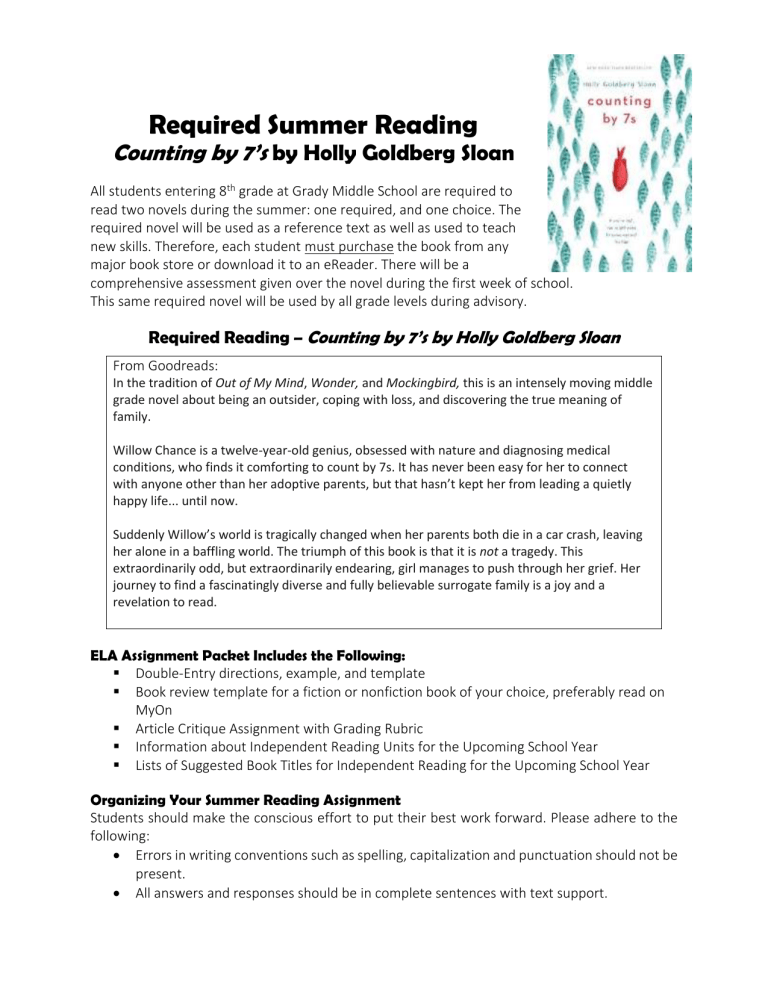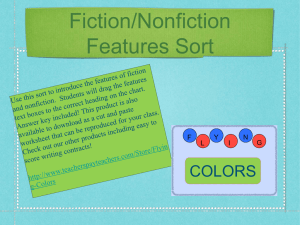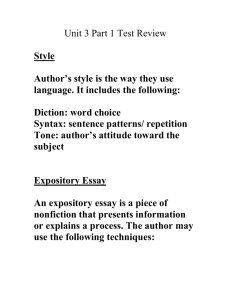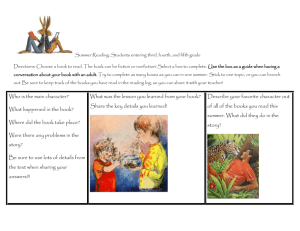Required Reading

Required Summer Reading
Counting by 7’s by Holly Goldberg Sloan
All students entering 8 th grade at Grady Middle School are required to read two novels during the summer: one required, and one choice. The required novel will be used as a reference text as well as used to teach new skills. Therefore, each student must purchase the book from any major book store or download it to an eReader. There will be a comprehensive assessment given over the novel during the first week of school.
This same required novel will be used by all grade levels during advisory.
Required Reading
–
Counting by 7’s by Holly Goldberg Sloan
From Goodreads:
In the tradition of Out of My Mind, Wonder, and Mockingbird, this is an intensely moving middle grade novel about being an outsider, coping with loss, and discovering the true meaning of family.
Willow Chance is a twelve-year-old genius, obsessed with nature and diagnosing medical conditions, who finds it comforting to count by 7s. It has never been easy for her to connect with anyone other than her adoptive parents, but that hasn’t kept her from leading a quietly happy life... until now.
Suddenly Willow’s world is tragically changed when her parents both die in a car crash, leaving her alone in a baffling world. The triumph of this book is that it is not a tragedy. This extraordinarily odd, but extraordinarily endearing, girl manages to push through her grief. Her journey to find a fascinatingly diverse and fully believable surrogate family is a joy and a revelation to read.
ELA Assignment Packet Includes the Following:
Double-Entry directions, example, and template
Book review template for a fiction or nonfiction book of your choice, preferably read on
MyOn
Article Critique Assignment with Grading Rubric
Information about Independent Reading Units for the Upcoming School Year
Lists of Suggested Book Titles for Independent Reading for the Upcoming School Year
Organizing Your Summer Reading Assignment
Students should make the conscious effort to put their best work forward. Please adhere to the following:
Errors in writing conventions such as spelling, capitalization and punctuation should not be present.
All answers and responses should be in complete sentences with text support.
If you use another source, you must cite it both in your document (in-text citation) and on a works cited page. See the MLA manual or online at the Purdue Owl for help.
Responses and reflections may be typed or handwritten. You are invited to use the format in this packet, but are not required to do so.
Double Entry Journals
Students will complete a double-entry journal with seven quotes and seven reflections over the course of the whole book, Counting by 7’s.
Directions: Double-Entry Journals (also known as dialectical journals) is a special type of reading log in which the pages are divided into two columns. In the left column students write quotes from the story they are reading, and in the right column they reflect on each quote. They may relate a quote to their own lives, react to it, write a question, or make some other connection.
Example: The following are excerpts from a 5 th grade student’s double-entry journal about The
Lion, the Witch, and the Wardrobe (Lewis, 1950).
Quotes
Chapter 1
I tell you this is the sort of house where no one is going to mind what we do.
Chapter 5
“How do you know?” he asked, “that your sister’s story is not true?”
Chapter 15
Still they could see the shape of the great lion lying dead in his bonds.
They’re nibbling at the cords.
Reflections
I remember the time that I went to
Beaumont, Texas to stay with my aunt.
My aunt’s house was very large. She had a piano and she let us play it. She told us what we could do whatever we wanted to do.
It reminds me of when I was little and I had an imaginary place. I would go there in my mind. I made up all kinds of makebelieve stories about myself in this imaginary place. One time I told my big brother about my imaginary place. He laughed at me and told me I was silly. But it didn’t bother me because nobody can stop me from thinking what I want.
When Aslan died I thought about when my Uncle Carl died. This reminds me of the story where the lion lets the mouse go and the mouse helps the lion.
Choice Novel: Book Review Template
Book Review Template for Middle School
Summary: Write a summary of a fiction or nonfiction book of your choice. You are encouraged to read a book on www.MyOn.com
. Your username is your iStation log in, and the password is MyOn.
First Paragraph- Write about the setting (where the story takes place, usually the time and place). Introduce the main character or characters in the story. For example, what are the characters’ names? Qualities? What motivates them? Discuss what conflict or problem the main character faces in the story. If you’re still having trouble starting, you can answer the questions: who, what, when, where, why, and how.
Second Paragraph- Summarize what happens up until the high point (climax) of the story. Don’t give away the ending; this should be just enough to tease the reader into wanting to get this book. Use some of these transition words to help write the review:
First Finally For example
Second
Third
Last
After that
Because
Next
Another
As a result
Later
During Also
Between
Then
Opinion- Write a paragraph giving your opinion on the book. Use these guidelines:
Write about why you like or dislike the book. Give details. For example, was the book confusing? Was it too easy to read, or was it too hard? Was it predictable/believable? Did you like the ending? What was your favorite part? What connections did you make with your life or with other books? Talk about the author’s style of writing and give examples from the book. Minimum five sentences.
Recommendation- Explain whether you would recommend this book to students, or not. Rate the book from 1-5 stars, five being the best, and give examples from the text why you gave it the rating you did.
Examples should include a quote or quotes from the book, or a summary of the part of the book that you liked or did not like.
Nonfiction Article Critique Assignment
Please follow the directions below.
1.
Search for TWO (2) NON-FICTION pieces. The world-wide web is the optimal source for searching. However, not all locations are trustworthy.
2.
One (1) of the pieces must be a non-fiction article. You may use the “Nature of of
Modern Science and Scientific Knowledge” by Dr. Martin Nickels article or the
“Learning Science” by Isaac Asimov for this assignment. The other piece may be your choice and may include a documentary, non-fiction book, or YouTube video, for example. Remember, both pieces must be NON-FICTION.
3.
Using the nonfiction reflection format below, write a multi-paragraph response for each piece.
First Name & Last Name
Month Day, 2014
8 th
English & Reading
Mrs. Leahy/Ms. Narvaez
Title
Paragraph 1: Summary of the article including author’s purpose (What did the author want us to know?)
Paragraph 2: What did you learn from this piece of nonfiction?
Paragraph 3: Connect this piece of nonfiction with the novel or another content area, i.e. science, math, history, art, Wonder , etc.
Paragraph 4: What did you think about this article? Do you agree with it?
Disagree? Use this last paragraph to reflect.
Note –Required Font Size: 12pt.
Required font: Times New Roman, Calibri, etc
In-text citation is expected when using another source to support your ideas. I will be looking for it.
(Footer)----------------------------------------------------------------------------------------
Works Cited
MLA Citation: Author of the Article – Last Name, First Name; Title of the Article, Date Article was
Written or Given to You
Scoring the Article Critiqu
e
Students will be assessed in two of the four Language A criterion:
Criterion A – Analyzing
Scoring Rubric
Criterion D – Using Language
7 – 8: Response clearly demonstrates understanding of the task, completes all requirements, and provides an insightful explanation/opinion that links to or extends aspects of the text.
5 – 6: Response demonstrates an understanding of the task, completes all requirements, and provides some explanation/opinion using situations or ideas from the text as support.
3 – 4: Response may address all of the requirements, but demonstrates a partial understanding of the task, and uses text incorrectly or with limited success resulting in an inconsistent or flawed explanation.
2 – 1: Response demonstrates minimal understanding of the task, does not complete the requirements, and provides only a vague reference to or no use of the text.
Response does not provide enough information for the teacher to evaluate.
0: Response is irrelevant or off-topic or has been plagiarized.
________________________________________________________________________
8
th
Grade Summer Reading Turn-In Checklist
Copy of Counting by 7’s by Holly Goldberg Sloan.
Double-Entry Journal with seven quotes and seven reflections
Book Review for another book, fiction or nonfiction, read on MyOn
Two nonfiction reflections: o Reflection of a nonfiction article
It may be an article from another teacher’s summer reading assignment o Reflection for another piece of nonfiction in whatever format I choose, whether it’s another article, a documentary, a book, a YouTube video, a podcast, an interview….
Sources are cited in-text and as well as on a works cited page.
All of this is due the first week of school. You may email your work when you finish it over the summer to: shuffman@houstonisd.org
or to mnarvae1@houstonisd.org
Independent Reading for 2015-2016 8 th Graders
Henry W. Grady Middle School
Eighth grade ELA classes will participate in independent reading throughout the school year. This handout is intended to provide students with a jump-start on the required reading for our first and subsequent independent reading assignments.
Each independent reading unit will involve reading a book from an assigned genre, completing written literature circle questions, sharing in small groups, and completing a written IR (independent reading) assessment. The requirements and expectations of IR questions and assessments will be covered with students in the Fall Semester when school starts.
The written IR assignments that students will do throughout the year will require them to use specific details from the text. Therefore, we strongly urge you to buy copies of the books so that your student will still have the books in his/her possession when it is time to do the assignments .
A tentative timeline for our independent reading assignments is included below for your reference and a list of suggested titles for each IR assignment is included at the end of this handout.
IR (Independent Reading) Genre Timeline for 2015-2016
IR #1 – September/October – Mystery/Science Fiction/Fantasy
IR #2 – November/December – Biography/Nonfiction
IR #3 –-January/February – WWII/Holocaust/War in the Pacific
IR #4 – March/April – Historical fiction with an emphasis on US history
IR #5 – April/May – Free Choice
Each IR Book must meet the following requirements:
-falls under one of the genres requested for that particular IR assignment
-is 200 pages or more (this is only a guideline; if the book is a bit shy of 200 pages, it is acceptable).
-appropriate level of reading and interest for your student
-parent approves of the book (we will collect signed parent approval forms throughout the year)
The first independent reading unit will begin approximately four weeks after school begins. Students will need to bring a copy of their mystery/science fiction/fantasy book with them at this time.
Suggested Titles for Independent Reading Assignments
NOTE: These are just suggestions. Students may select books not on this list provided that the books meet the previously described requirements and have parent approval.
IR #1 – Mystery/ Science Fiction/Fantasy/Horror
Mystery
And Then There Were None by Agatha
Maximum Ride: The Angel Experiment by
James Patterson
Christie
Murder on the Orient Express by Agatha
Christie
I'd Tell You I Love You, But Then I'd Have to
Kill You by Ally Carter
Last Shot by John Feinstein
Scorpia by Anthony Horowitz
SciFi
Something Wicked This Way Comes by Ray
BradburyFahrenheit 451 by Ray Bradbury
Ender's Game by Orson Scott Card
1984 by George Orwell
The Hunger Games by Suzanne Collins
Fantasy
Heir Apparent by Vivian Vande Velde
A Great and Terrible Beauty by Libba Bray
The Red Pyramid by Rick Riordan
Horror
Frankenstein by Mary Shelley
City of Bones by Cassandra Clare
Shadowland by Meg Cabot
The Maze Runner by James Dashner
The Vampire Plagues I: London 1850 by
Sebastian Rook
IR #2 – Biography/Nonfiction
Red Scarf Girl: A Memoir of the Cultural
Revolution by Ji-li Jiang
Angela’s Ashes by Frank Mc Court
I Know Why the Caged Bird Sings by Maya
Angleou
Hawk: Occupation Skateboarder by Tony
Hawk
Ryan White: My Own Story by Ryan White,
Ann Marie Cunningham, and Jeanne White
The Greatest: Muhammad Ali by Walter
Dean Myers
Rosa Parks: My Story by Rosa Parks and Jim
Haskins
Chinese Cinderella: The True Story of an
Unwanted Daughter by Adeline Yen Mah
Soul Surfer by Bethany Hamilton
A Long Way Gone: Memoirs of a Boy Soldier by Ishmael Beah
Small Steps: The Year I Got Polio by Peg
Kehret
Escape from Slavery: The True Story of My
Ten Years in Captivity and My Journey to
Freedom in America by Francis Bok and
Edward Tivnan
Zlata's Diary: A Child's Life in Wartime
Sarajevo Revised Edition by Zlata Filipovic
Beckham: Both Feet on the Ground: An
Autobiography by David Beckham & Tom
Watt
My Life and the Beautiful Game: The
Autobiography of Soccer's Greatest Star by
Pele
Lakota Woman by Mary Crow Dog
The Middle Place by Kelly Corrigan
Enrique’s Journey by Sandra Nazario
Falling Leaves: A Memoir of an Unwanted
Chinese Daughter by Adeline Yen Mah
Bad Boy: A Memoir by Walter Dean Myers
High Exposure: An Enduring Passion for
Everest and Unforgiving Places by David F.
Breashears
Warriors Don't Cry: A Searing Memoir of the
Battle to Integrate Little Rock's Central High by Melba Pattillo Beals
Go for the Goal: A Champion's Guide to
Winning in Soccer and Life by Mia Hamm
When I was Puerto Rican by Esmeralda Santiago
IR #3 – WWII/Holocaust/War in the Pacific
All but My Life by Gerda Weissman Klein In My Hands: Memories of a Holocaust
The Cage by Ruth Minsky Sender
Code Talker: A Novel About the Navajo
Marines of World War Two by Joseph
Bruchac
Daniel Half Human by David Chotjewitz
The Diary of Dawid Sierakowiak Edited by
Alan Adelson
Eleanor’s Story – An American Girl in Hitler’s
Germany by Eleanor Ramrath Garner
Farewell to Manzanar: A True Story of
Japanese American Experience during and
After the World War II Internment by
Jeanne Wakatsuki Houston
The Hiding Place by Corrie ten Boom
Hidden Child of the Holocaust by Stacy
Cretzmeyer
I Have Lived A Thousand Years: Growing Up
In The Holocaust by Livia Bitton-Jackson
If I Should Die Before I Wake by Han Nolan
Rescuer by Irene Gut Updike
I Will Plant You a Lilac Tree: A Memoir of a
Schindler's List Survivor by Laura Hillman
In the Mouth of the Wolf by Rose Zar
The Last Mission by Harry Mazer
Milkweed by Jerry Spinelli
No Pretty Pictures: A Child of War by Anita
Lobel
Parallel Journeys by Elanor Ayer
Rena's Promise by Rena Kornreich Gelissen
Summer of My German Soldier by Bette
Greene
Touch Wood: A Girlhood in Occupied France by Renee Roth-Hano
The Road From Home: A True Story of
Courage, Survival and Hope by David
Kherdian
The Boy in the Striped Pajamas by John
Boyne
The Devil’s Arithmetic by Jane Yolen
IR #4 Historical Fiction
Fever 1793 by Laurie Halse Anderson
Chains: Seeds of America Laurie Halse
Anderson
The Scarlet Letter Nathaniel Hawthorne
April Morning by Howard Fast
Johnny Tremaine by Esther Forbes
The Year of the Hangman by Gary
Blackwood
A Break With Charity by Ann Rinaldi
Cast Two Shadows by Ann Rinaldi
The Arrow Over the Door by Joseph Bruchac
The Winter People by Joseph Bruchac
My Brother Sam is Dead by James Collier
The Red Badge of Courage Stephen Crane
The Ransom of Mercy Carter by Caroline
Cooney
Roanoke by Sonia Levitan
A Light in the Forest by Conrad Richter
The Witch of Blackbird Pond by Elizabeth
Speare
Calico Captive by Elizabeth George Speare
Letters from a Slave Girl: The Story of
Harrier E. Jacobs Mary E. Lyons
Across Five Aprils by Irene Hunt
War Comes to Willie Freeman James and
Christopher Collier
Bull Run Paul Fleischman
IR #5 – Free Choice
Students can choose any book they haven’t read before that meets the previously described requirements and has parent approval.
9
10






